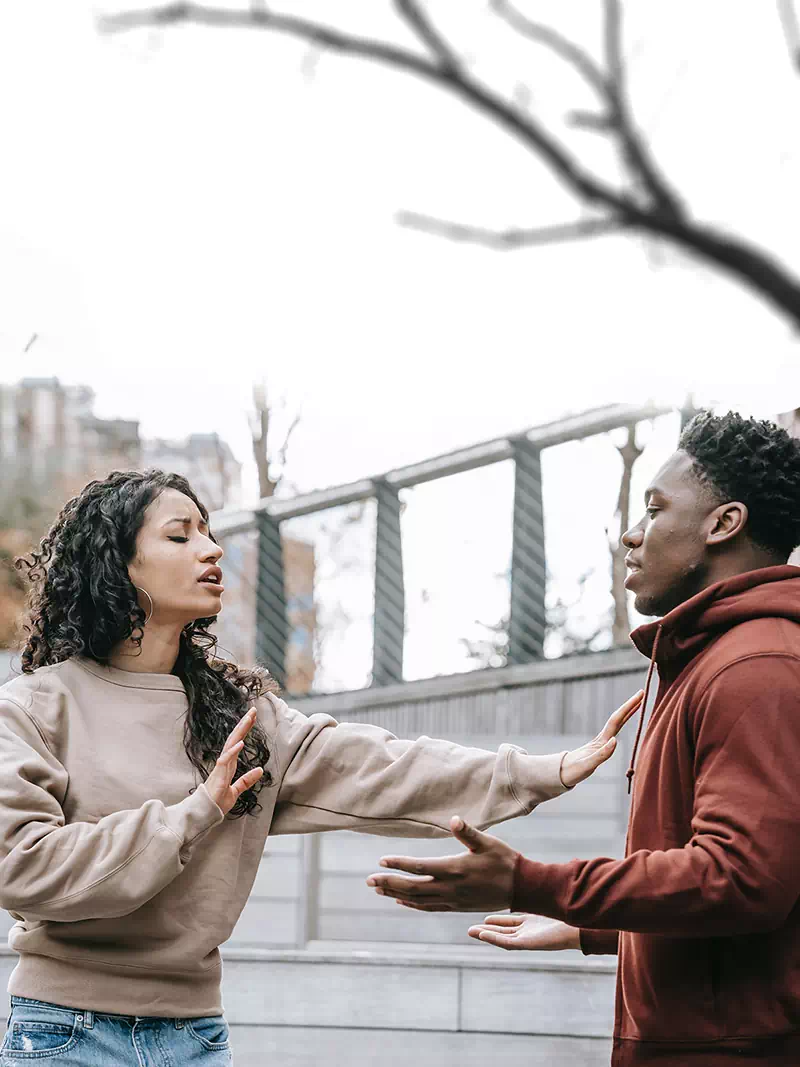Respect is a fundamental component of healthy and fulfilling relationships, whether they are romantic, familial, platonic, or professional. Creating an environment of respect is essential for promoting open communication, building trust, and fostering mutual understanding. However, building respectful relationships requires effort and intentional action. It requires individuals to practice empathy, communicate openly and honestly, and acknowledge and respect boundaries. In this context, this article will discuss 30 ways to create an environment of respect in relationships, including listening actively, avoiding interrupting, showing empathy, practicing forgiveness, being honest, showing appreciation, avoiding passive-aggressive behavior, taking responsibility for your mistakes, practicing mindfulness, avoiding making assumptions, respecting boundaries, avoiding gossip, practicing self-care, recognizing and addressing power imbalances, and fostering a culture of mutual respect. By incorporating these practices into your relationships, you can create a positive and supportive environment that promotes growth, development, and fulfillment.
Communicate openly and honestly
Open communication is essential to building a healthy and respectful relationship. Communication is not only about expressing your thoughts and feelings but also about actively listening to the other person. When communicating, it’s important to be clear, concise, and respectful. You should express your thoughts and feelings in a way that is constructive and avoid being confrontational or attacking the other person. You should also be willing to listen to the other person’s perspective and take their thoughts and feelings into consideration. Communication is a two-way street, so it’s important to be an active listener as well as an effective communicator.
Set boundaries
Setting boundaries is an important aspect of building a respectful relationship. Boundaries define what is and isn’t acceptable behavior in a relationship, and they provide a framework for how people should treat each other. When setting boundaries, it’s important to be clear, consistent, and respectful. You should express your boundaries in a way that is firm but not aggressive, and you should be willing to enforce them. Boundaries can help prevent misunderstandings and conflicts and promote a healthy and respectful relationship.
Avoid criticism and blame
Criticism and blame can be harmful to a relationship and can quickly escalate into arguments and hurt feelings. When expressing your thoughts and feelings, it’s important to avoid blaming or attacking the other person. Instead, focus on expressing your own feelings and concerns in a constructive and respectful manner. Use “I” statements to express how you feel, such as “I feel hurt when you do X.” This can help prevent the other person from becoming defensive and can promote open communication.
Use “I” statements
Using “I” statements is an effective way to express your thoughts and feelings in a way that is respectful and constructive. “I” statements focus on how you feel, rather than on the other person’s behavior. For example, instead of saying “You always do X,” you could say “I feel upset when X happens.” This can help prevent the other person from becoming defensive and can promote open communication.
Show empathy
Empathy is the ability to understand and share the feelings of others. When building a respectful relationship, it’s important to show empathy towards the other person’s feelings and needs. This means actively listening to the other person, trying to understand their perspective, and showing concern for their well-being. Empathy can help build trust and foster a deeper connection between people.
Practice active listening
Active listening involves fully focusing on the other person and trying to understand their message. This means avoiding distractions and interruptions and showing genuine interest in what they are saying. When actively listening, it’s important to avoid making assumptions or jumping to conclusions. Instead, ask clarifying questions to ensure that you fully understand the other person’s perspective. Active listening can help prevent misunderstandings and promote open communication.
Respect differences
Respecting differences is an important aspect of building a respectful relationship. Everyone has different opinions, beliefs, and values, and it’s important to respect these differences. This means avoiding judgment and criticism and being willing to learn from the other person’s perspective. Respecting differences can help promote open communication and can help build a deeper understanding and appreciation for the other person.
Be mindful of your tone and body language
The tone of your voice and your body language can convey as much meaning as the words you use. It’s important to be mindful of your tone and body language when communicating with others. Avoid using an aggressive or defensive tone, as this can be perceived as confrontational. Instead, use a calm and respectful tone of voice, and maintain an open and engaged body posture. This can help promote a positive and respectful environment for communication.
Acknowledge and validate feelings
When someone shares their feelings with you, it’s important to acknowledge and validate them. Acknowledging someone’s feelings means letting them know that you have heard what they said and that you understand how they are feeling. Validation means acknowledging that their feelings are real and that they have a right to feel that way. Validating someone’s feelings can help build trust and promote a deeper connection.
Take responsibility for your actions
Taking responsibility for your actions means owning up to your mistakes and making amends when necessary. When you make a mistake, it’s important to apologize and make a genuine effort to make things right. This can help build trust and respect in your relationships.
Practice forgiveness
Forgiveness is an important part of building a respectful relationship. When someone apologizes for their actions, it’s important to forgive them and move forward. Holding onto grudges and resentment can be toxic to a relationship and can prevent growth and progress. Forgiveness doesn’t mean forgetting what happened or excusing the behavior, but it does mean letting go of the anger and resentment.
Show appreciation and gratitude
Showing appreciation and gratitude for the people in your life is an important aspect of building a respectful relationship. It’s important to express your gratitude and let the other person know that you appreciate them. This can be as simple as saying “thank you” or expressing your appreciation through actions. Showing appreciation and gratitude can help build a positive and respectful environment for communication and can strengthen your relationships.
Be open to feedback
Being open to feedback is an important aspect of creating an environment of respect in relationships. It’s important to be receptive to constructive criticism and feedback from others, as this can help you learn and grow as a person. When someone offers feedback, try to listen without becoming defensive or dismissive. Take the time to reflect on the feedback and consider how you can use it to improve your relationships.
Respect boundaries
Respecting boundaries is essential to building a respectful relationship. It’s important to recognize and honor the boundaries of others, whether they are physical, emotional, or intellectual. When someone sets a boundary, it’s important to respect it and not push them beyond their comfort zone. This can help build trust and create a safe and respectful environment for communication.
Avoid assumptions and stereotypes
Assumptions and stereotypes can be harmful to relationships and can lead to misunderstandings and miscommunication. It’s important to avoid making assumptions about others based on their gender, race, ethnicity, religion, or any other characteristic. Instead, take the time to get to know the person and understand their unique perspective and experiences. This can help build a more inclusive and respectful relationship.
Practice self-care
Practicing self-care is an important aspect of creating an environment of respect in relationships. It’s important to take care of your own needs and prioritize your mental, physical, and emotional health. This can help you be more present and engaged in your relationships, and can prevent burnout and resentment.
Set healthy boundaries
Setting healthy boundaries is essential to building a respectful relationship. It’s important to communicate your needs and boundaries clearly and assertively, and to respect the needs and boundaries of others. Setting healthy boundaries can help prevent misunderstandings and conflicts and can promote a more respectful and harmonious relationship.
Foster a growth mindset
Fostering a growth mindset is an important aspect of creating an environment of respect in relationships. This means being open to learning and growth, and embracing challenges and opportunities for personal and interpersonal development. By cultivating a growth mindset, you can approach relationships with curiosity and openness, and create a more dynamic and fulfilling connection with others.
Avoid blaming and criticism
Blaming and criticism can be detrimental to a respectful relationship. It’s important to avoid using language that puts the blame on others, and instead, focus on constructive communication that helps resolve issues. Criticizing someone can also be hurtful and disrespectful. Instead of criticizing, focus on specific behaviors or actions that you would like to see changed.
Seek to understand differences
Respectful relationships require an open mind and a willingness to understand differences. It’s important to acknowledge and respect the different experiences, perspectives, and values of others. Seeking to understand differences can help create a more inclusive and respectful relationship.
Be empathetic
Empathy is the ability to understand and share the feelings of another person. It’s an important aspect of building respectful relationships because it helps us connect with others on a deeper level. To practice empathy, try to put yourself in the other person’s shoes, and imagine how they might be feeling. This can help create a more positive and respectful environment for communication.
Practice active problem-solving
Effective problem-solving is an essential aspect of building respectful relationships. It involves working together to find solutions that meet the needs and boundaries of all parties involved. To practice active problem-solving, focus on finding mutually beneficial solutions that respect the needs and boundaries of everyone involved.
Practice forgiveness
Forgiveness is an important aspect of building respectful relationships. Holding grudges and resentment can create negative energy that can harm the relationship over time. To practice forgiveness, focus on understanding the other person’s perspective and acknowledging their feelings. This can help release negative emotions and promote healing.
Be honest
Honesty is essential to building respectful relationships. It means being truthful and transparent about your thoughts, feelings, and actions. When you are honest with others, you build trust and promote mutual understanding. This can help create a more positive and respectful environment for communication.
Show appreciation
Showing appreciation is an important aspect of building respectful relationships. It means recognizing and valuing the contributions and efforts of others. When you show appreciation, you demonstrate that you care about the other person and that you are grateful for their presence in your life.
Avoid passive-aggressive behavior
Passive-aggressive behavior can be harmful to a respectful relationship. It involves expressing negative emotions indirectly, such as through sarcasm, silent treatment, or withholding information. Instead of using passive-aggressive behavior, focus on communicating your needs and feelings directly and assertively.
Take responsibility for your mistakes
Taking responsibility for your mistakes is an important aspect of building respectful relationships. It means acknowledging when you have made a mistake and taking steps to make amends. When you take responsibility for your mistakes, you demonstrate accountability and a willingness to learn and grow.
Practice mindfulness
Practicing mindfulness is an important aspect of creating an environment of respect in relationships. It means being present and fully engaged in the moment, and focusing on the thoughts and feelings of yourself and others. By practicing mindfulness, you can cultivate a deeper sense of empathy and understanding, and create a more positive and respectful environment for communication.
In conclusion, creating an environment of respect in relationships is a crucial step towards building healthy, fulfilling, and long-lasting relationships. It requires individuals to practice empathy, communicate openly and honestly, and acknowledge and respect boundaries. By incorporating the 36 ways discussed in this article, you can promote open communication, build trust, and foster mutual understanding. Ultimately, creating an environment of respect in relationships can lead to a more positive and supportive environment that promotes growth, development, and fulfillment for everyone involved. So, whether you’re in a romantic relationship, a friendship, or a professional relationship, remember that respect is key to creating a strong foundation for your relationship, and that it requires effort, intention, and consistent action. By committing to these practices, you can create a more respectful, positive, and fulfilling environment for yourself and those around you.













